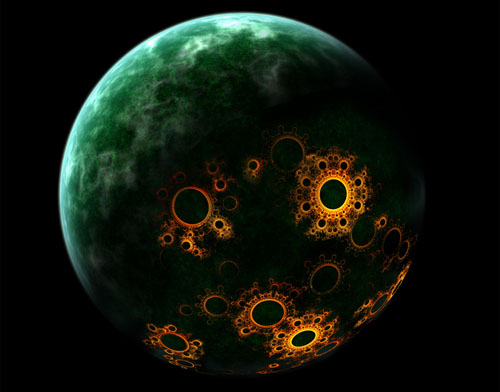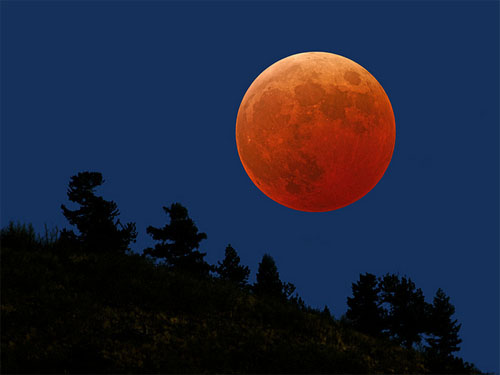The Ninth World of Numenera exists a billion years in the future: Eight civilizations of galactic prowess, capable of restructuring the laws of physics and engaging in mega-construction projects of staggering scope, have risen and fell. The modern inhabitants of Earth live in the shattered ruins of the masterpieces: Vast features of the landscape (on a scale larger than the tallest mountains) are utterly artificial extrusions from the dim recesses of a forgotten prehistory. Even the dirt beneath our feet is, in fact, artificial — particles of plastic and metal and biotechnical growths which have been eroded by incomprehensible aeons; each bucket of soil filled not with stone arrowheads, but with compact power supplies and the cracked crystals of ancient data storage devices.
One thing the Numenera rulebook doesn’t talk much about, however, is the moon. Mercury is missing (some prior civilization stole it away or pounded it apart), but we know the moon is still up there: Slightly smaller than we’re accustomed to (because it’s a little farther away), but still possessed of its familiar phases. But does it look the same? Earth has been utterly transformed. What do the men and women of the Ninth World see when they look up into the night sky?
The answer I came up with is a little different.
MOON OF GREEN
First, it should be noted that the moon is no longer tidally locked. It rotates.The idea of the “dark side of the moon” is, literally, a thing of the past.
One side of the moon is green and verdant: It has apparently been terraformed and is now covered by vast forests. A huge, silver-blue ocean formed from two overlying circles (possibly ancient craters) lies in the middle of the northern hemisphere. (This ocean is known by a number of names: The Mare Sea, the Spider’s Eyes, the Infinity Brow, the Babe in the Moon, and so forth.) Those possessed with the proper telescopic tools or numenera have observed citadels poking up through the canopy here and there, although it’s unclear if there are any signs of life.
And then, from time to time and on no regular schedule that anyone has been able to ascertain, this happens:
No one truly knows what it means, although scholars have noted that many of the fractal mandala circles have been fading over time. Some mandala constellations appear to have gone out completely.
SHEEN OF SILVER
The other side of the moon is a desert of pale, silver sand.
In other words, it looks much like the moon does today: Was it restored to a “pristine” condition? Never touched by the terraforming? Is the terraforming nothing more than an illusion? Or is the “untouched” side of the moon the true illusion?
The key point is that the light you see the Ninth World by depends on the turning of the moon: There are nights of green and there are nights of silver.
And there are also nights of red.
NIGHT OF RED
Between the green side of the moon and the silver side of the moon, there is a desert of red. Telescopic examination of this portion of the moon reveals vast, ruined cities which are constantly being buried, revealed, and buried again by the shifting lunar winds. This red desert often provides no more than a lurid, backlit glow to the green or silver moons. But upon occasion the lunar phases and rotation will turn right and a violent, crimson scar will hang above the Ninth World.
The red nights, when the world is viewed through a haze of blood, are times of ill luck and foul fortunes.














Very nice. Very evocative.
I like this, but the moon is tidally locked, meaning we never see the far side.
@Andrew
First line after Moon of Green:
“First, it should be noted that the moon is no longer tidally locked. It rotates.The idea of the “dark side of the moon” is, literally, a thing of the past.”
@Corsair114
Yup. I missed that. Derp.